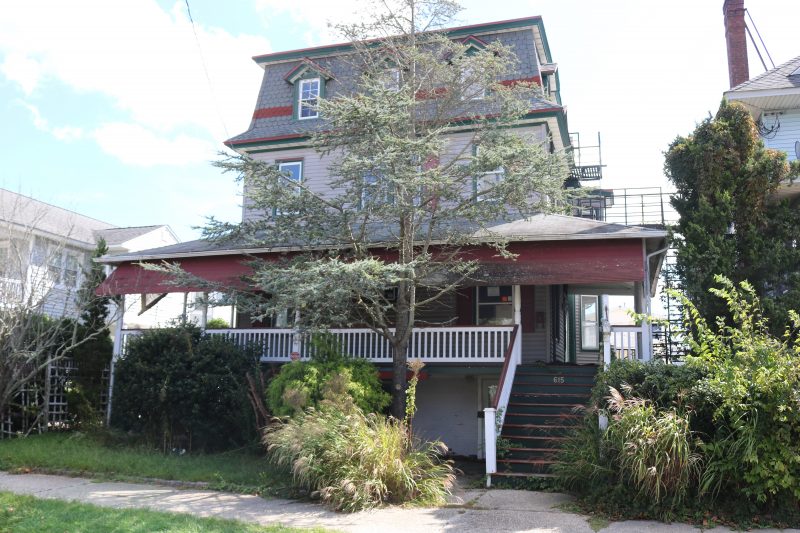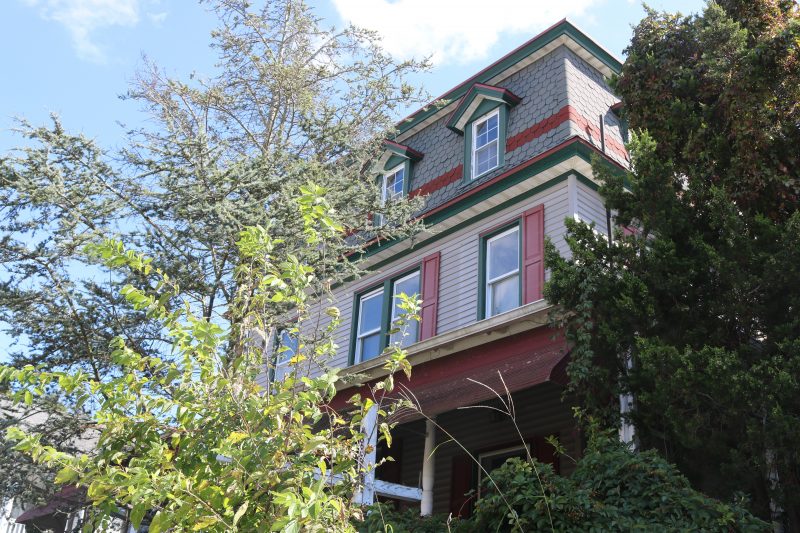
By DONALD WITTKOWSKI
An eyesore or historic gem? Unrepairable or a fix-it-upper? A historic home built only 23 years after Ocean City’s founding in 1879 as a seaside resort town by four Methodist ministers awaits its fate amid a fight over whether the deteriorated house should be demolished or saved. The now-empty home is located at 615 Wesley Avenue in the heart of the city’s Historic District, an area that roughly stretches between Third and Eighth streets and Central and Ocean avenues. On Sept. 1, the Ocean City Historic Preservation Commission, which approves demolition, new construction or rehabilitation projects within the district, denied the property owner’s request for permission to tear down the 118-year-old house to make room for a new duplex. Following up on the commission’s action, the city’s administrative officer also refused a demolition permit on Oct. 8. Now the property owner, a group called RJGVB LLC of Shippensburg, Pa., is appealing the denial of the demolition permit to the Ocean City Zoning Board. The zoning board is scheduled to consider the matter at its Dec. 16 meeting, which will be conducted online and by teleconference during the pandemic. The lawyer and an architect representing RJGVB argue that the old house is contaminated by black mold infestation, suffers from major structural defects and has been repeatedly damaged over the years by floodwater. “As the testimony will indicate, the building on the property contains hazardous mold infestation. The building was badly damaged during Superstorm Sandy and no remedial work was ever undertaken,” Avery Teitler, RJGVB’s attorney, wrote in a Nov. 10 letter to the zoning board appealing the denial of the demolition permit. Teitler included reports from an architect and a mold repair expert that describe the home’s deteriorated condition, including the mold contamination. Teitler also said the house has “major structural defects and a single stacked brick foundation that cannot be salvaged.” Overgrown vines and weeds are creeping up the front steps at the old home.
George Wray Thomas, an architect representing RJGVB, said the house has been so radically altered and reconstructed over the years that virtually all of its historic features have been lost.
“The Mansard roof is the only historical feature remaining and the original slate has been replaced with asphalt shingles,” Thomas wrote in a Jan. 20 letter to the Historic Preservation Commission.
The home’s original history dating to 1902 isn’t immediately clear, but over the years it has variously served as the Genevieve Guest House and the Koo-Koo’s Nest bed and breakfast, according to online real estate records.
Lately, it has been listed for sale at $999,000. The house includes five bedrooms and 4.5 bathrooms within 5,250 square feet of space, according to real estate records.
The house has been classified as a “key building” in the Historic District, the highest ranking for historically significant structures, City Deputy Tax Assessor Mike Brady said.
Ideally, the Historic Preservation Commission would like to see someone buy the house and restore it.
“There’s so much to that original building that is still there. There’s no reason that building should be torn down. The building has a tremendous amount of street presence,” John Loeper, the commission’s chairman, said in a September interview.
Built in the Second French Empire architectural style, the four-story house is part of a block of homes on Wesley Avenue dating to the late 19th and early 20th centuries.
Overgrown vines and weeds are creeping up the front steps at the old home.
George Wray Thomas, an architect representing RJGVB, said the house has been so radically altered and reconstructed over the years that virtually all of its historic features have been lost.
“The Mansard roof is the only historical feature remaining and the original slate has been replaced with asphalt shingles,” Thomas wrote in a Jan. 20 letter to the Historic Preservation Commission.
The home’s original history dating to 1902 isn’t immediately clear, but over the years it has variously served as the Genevieve Guest House and the Koo-Koo’s Nest bed and breakfast, according to online real estate records.
Lately, it has been listed for sale at $999,000. The house includes five bedrooms and 4.5 bathrooms within 5,250 square feet of space, according to real estate records.
The house has been classified as a “key building” in the Historic District, the highest ranking for historically significant structures, City Deputy Tax Assessor Mike Brady said.
Ideally, the Historic Preservation Commission would like to see someone buy the house and restore it.
“There’s so much to that original building that is still there. There’s no reason that building should be torn down. The building has a tremendous amount of street presence,” John Loeper, the commission’s chairman, said in a September interview.
Built in the Second French Empire architectural style, the four-story house is part of a block of homes on Wesley Avenue dating to the late 19th and early 20th centuries.
 Although it is empty now, over the years the home served as the Genevieve Guest House and then the Koo-Koo’s Nest bed and breakfast, according to online real estate records.
In its current condition, it has a weather-beaten exterior, long vines creeping up its steps and a battered white fence. Much of the facade is obscured by overgrown trees and shrubbery. The light green paint has long since faded, along with the burgundy trim.
Loeper said the old house remains in good overall physical condition despite its deteriorated exterior.
“The building stands there in the community in the same way it stood the day it was built,” he said.
Michael Calafati, the architect representing the Historic Preservation Commission, believes the home should be saved, rehabilitated and reoccupied. He said in a report to the commission that the house is part of the “valuable streetscape” that is becoming “increasingly rare in the historic district and needs to be preserved.”
Despite the changes to the house over the years, “the original building fabric does remain and the building’s original shape, form and massing immediately convey the image of a late 19th century Second French Empire Style home with a Mansard roof,” Calafati is quoted as saying in a Historic Preservation Commission resolution supporting the home’s preservation.
According to the resolution, Calafati’s report also addresses the concerns about the hazardous mold infestation. The Historic Preservation Commission and Calafati believe the mold can be removed from the house.
Environmental cleanup is a “routine undertaking when restoring old structures for a new life; this includes remediation of pervasive mold,” the resolution says, citing Calafati’s report.
Although it is empty now, over the years the home served as the Genevieve Guest House and then the Koo-Koo’s Nest bed and breakfast, according to online real estate records.
In its current condition, it has a weather-beaten exterior, long vines creeping up its steps and a battered white fence. Much of the facade is obscured by overgrown trees and shrubbery. The light green paint has long since faded, along with the burgundy trim.
Loeper said the old house remains in good overall physical condition despite its deteriorated exterior.
“The building stands there in the community in the same way it stood the day it was built,” he said.
Michael Calafati, the architect representing the Historic Preservation Commission, believes the home should be saved, rehabilitated and reoccupied. He said in a report to the commission that the house is part of the “valuable streetscape” that is becoming “increasingly rare in the historic district and needs to be preserved.”
Despite the changes to the house over the years, “the original building fabric does remain and the building’s original shape, form and massing immediately convey the image of a late 19th century Second French Empire Style home with a Mansard roof,” Calafati is quoted as saying in a Historic Preservation Commission resolution supporting the home’s preservation.
According to the resolution, Calafati’s report also addresses the concerns about the hazardous mold infestation. The Historic Preservation Commission and Calafati believe the mold can be removed from the house.
Environmental cleanup is a “routine undertaking when restoring old structures for a new life; this includes remediation of pervasive mold,” the resolution says, citing Calafati’s report.